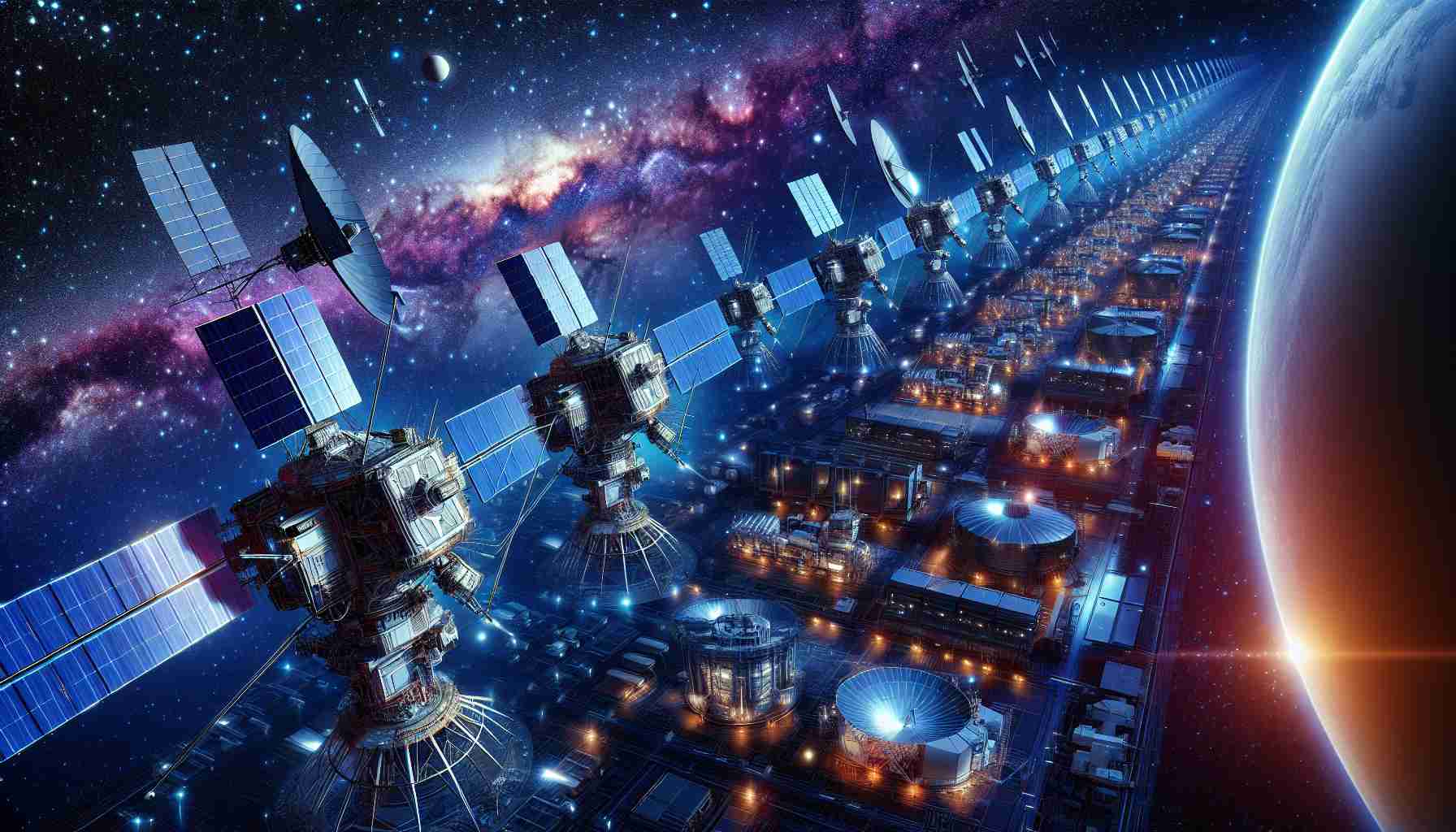The National Reconnaissance Office (NRO) is undergoing significant changes in its operations, with the development of a more diverse fleet of satellites and an overhaul of its ground systems. The agency aims to improve its intelligence gathering across a wider range of orbits and mission profiles by introducing smaller and more maneuverable satellites. This move towards a more diverse satellite architecture will increase the number of satellites operating across multiple orbits, allowing for greater revisit rates, increased coverage, and more timely delivery of information.
Alongside the changes to its satellite fleet, the NRO is also investing heavily in overhauling its satellite ground architecture. The agency is incorporating new technologies like artificial intelligence (AI) and machine learning to deal with the influx of data from its expanding satellite network. By leveraging AI and automation tools, the NRO will be able to process and exploit data more efficiently, allowing for more rapid tasking, re-tasking, and identification of critical information.
The NRO’s modernization efforts have been ongoing for several years and involve a shift towards more automated tasking and collection based on data models. The agency recognizes the importance of organizing the collected data into useful information. The goal is to make sense of the vast amount of data being collected by developing advanced data processing and exploitation capabilities.
While the specific details of the NRO’s plans are classified, this transformation signifies a major shift for the intelligence agency. The NRO’s fleet currently includes imaging satellites, signals intelligence satellites, and others that gather information through analyzing radio frequencies and emissions. These satellites play a crucial role in assisting civilian customers with natural disasters, climate change predictions, and humanitarian aid delivery. The Department of Defense and the intelligence community also heavily rely on the NRO’s capabilities for geolocation data and high-resolution imagery.
Frequently Asked Questions (FAQ):
Q: What is the National Reconnaissance Office (NRO)?
A: The National Reconnaissance Office is a secretive U.S. intelligence agency responsible for operating the country’s spy satellites.
Q: What changes is the NRO making to its operations?
A: The NRO is developing a more diverse fleet of satellites and overhauling its ground systems to improve its intelligence gathering capabilities.
Q: How will a more diverse satellite fleet benefit the NRO?
A: A more diverse satellite fleet will provide greater revisit rates, increased coverage, and more timely delivery of information.
Q: What technologies is the NRO incorporating into its ground systems?
A: The NRO is investing in artificial intelligence (AI) and machine learning to help process the large amount of data coming from its satellite network.
Q: Why is the NRO modernizing its ground systems?
A: The NRO recognizes the importance of organizing collected data into useful information and aims to develop more advanced data processing and exploitation capabilities.
Q: Who relies on the NRO’s capabilities?
A: Civilian customers, the Department of Defense, and the intelligence community heavily rely on the NRO’s capabilities for various purposes such as natural disaster assistance, climate change predictions, geolocation data, and high-resolution imagery.
The National Reconnaissance Office (NRO) operates in the intelligence industry, specifically focusing on the operation of spy satellites. With its ongoing modernization efforts, the NRO is adapting to emerging trends and technologies to enhance its intelligence gathering capabilities.
The industry of satellite intelligence is highly classified and operates within the realm of national security. The NRO plays a critical role in supporting operations and intelligence gathering for both civilian customers and the Department of Defense. The agency’s capabilities include imaging satellites, signals intelligence satellites, and those specialized in monitoring radio frequencies and emissions.
The market forecast for the satellite intelligence industry is promising, as the demand for advanced intelligence capabilities continues to grow. The NRO’s modernization efforts, including the development of a more diverse fleet and improved ground systems, aim to meet these evolving demands.
By introducing smaller and more maneuverable satellites, the NRO seeks to achieve a more diverse satellite architecture. This approach enables a greater number of satellites to operate across multiple orbits, resulting in increased revisit rates, expanded coverage, and faster delivery of critical information. These enhancements will significantly enhance the agency’s intelligence gathering capabilities.
In addition to upgrading its satellite fleet, the NRO is investing heavily in overhauling its satellite ground architecture. By incorporating artificial intelligence (AI) and machine learning technologies, the agency can effectively handle the vast amount of data generated by its expanding satellite network. The integration of AI and automation tools enables the NRO to process and exploit data more efficiently, facilitating quicker tasking, re-tasking, and identification of crucial information.
The NRO’s modernization efforts also focus on advanced data processing and exploitation capabilities to ensure the collected data is organized into useful information. This emphasis on data analysis and interpretation is crucial given the significant volume of data being collected. By utilizing cutting-edge technologies, the NRO can extract actionable intelligence from the collected data.
While the specific details of the NRO’s plans remain classified, these transformations signify a significant shift for the intelligence agency. The NRO’s commitment to modernization and incorporation of new technologies demonstrates its dedication to meeting the evolving demands of the intelligence community and ensuring the continued provision of critical intelligence capabilities.
For more information about the National Reconnaissance Office and its operations, you can visit their official website at www.nro.gov.

